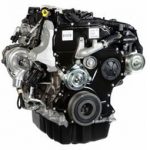Vive la France! Vive la Solutrans!
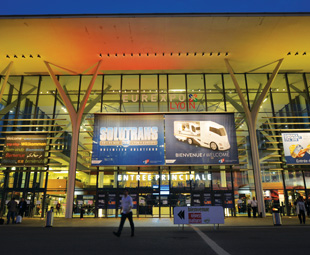
The timing of the 2015 rendition of Solutrans could not have been worse; doors to the exhibition opened just days after the terrorist attack in Paris. CHARLEEN CLARKE reports that the atmosphere in the exhibition halls was, however, surprisingly upbeat …
I arrived in Paris just hours after the terrorists’ deadly attacks. Not surprisingly, many people avoided travelling to the city. As a result, my Boeing 737 carried the princely sum of 30 travellers. I wondered if Solutrans would actually take place …
Many exhibitors and visitors wondered too, but the organisers of the event were quick to dispel fears; announcing that the show would, indeed, go on and that additional security measures would be put in place.
It was thus that, along with the rest of the International Truck of the Year (IToY) jury delegation, I arrived at the Eurexpo for day one of the exhibition. I was a tiny little bit anxious, but not nearly as uneasy as my colleagues from elsewhere on the planet (being a South African, I am not unfamiliar with violence).
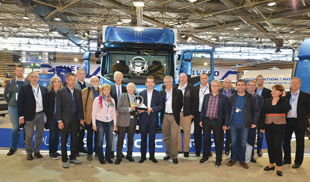 Also, the presence of heavily armed police officers everywhere was quite reassuring. (As an aside, it was interesting to note that many of the security guards appeared to be of Middle Eastern descent, because the locals refuse to do such a menial job; the French people told me that they felt that this was a bit of a black comedy of sorts … I’m not sure if this had anything to do with the complete lack of interest displayed by the guard stationed at our hotel; he did a hopeless job.)
Also, the presence of heavily armed police officers everywhere was quite reassuring. (As an aside, it was interesting to note that many of the security guards appeared to be of Middle Eastern descent, because the locals refuse to do such a menial job; the French people told me that they felt that this was a bit of a black comedy of sorts … I’m not sure if this had anything to do with the complete lack of interest displayed by the guard stationed at our hotel; he did a hopeless job.)
I digress, however. Back to the actual exhibition … First of all, a little bit of background for those readers who perhaps don’t know about Solutrans. It is essentially a transport exhibition (the only one of its type in France), and it brings together about 850 exhibitors from the road and urban transport sector (manufacturers of industrial and commercial vehicles, trailers, bodybuilders, equipment suppliers, tyre companies and component manufacturers).
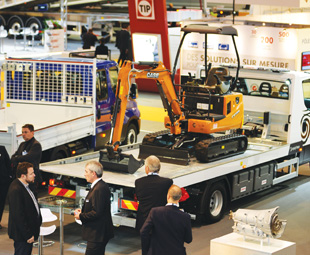 It takes place every two years and this was the 13th event (in this case, 13 was indeed a bad omen). The organisers were expecting 37 000 visitors (15 percent from outside France). A total of 36 000 arrived (the remaining 1 000 were no doubt scared off by the terrorist attacks), but this was still three percent up on 2013 visitor attendance. Those visitors were privy to a very interesting event, which I will attempt to cover in just five pages.
It takes place every two years and this was the 13th event (in this case, 13 was indeed a bad omen). The organisers were expecting 37 000 visitors (15 percent from outside France). A total of 36 000 arrived (the remaining 1 000 were no doubt scared off by the terrorist attacks), but this was still three percent up on 2013 visitor attendance. Those visitors were privy to a very interesting event, which I will attempt to cover in just five pages.
GREEN DISSENT
As is the case at virtually every transport-related event today, the focus was very much on greening the industry – and ecofriendly vehicles were everywhere. This makes commercial sense. Just take electric vehicles, for instance – between January and May 2015, registrations were up 52,5 percent, compared to the same period in 2014, with 35 283 registrations recorded.
There are now between 55 000 and 60 000 electric vehicles on the roads in France, and, by 2020, the country wants 24 percent of its fleet to comprise hybrid and electric vehicles; representing close to 550 000 units (of which 16 percent will be electric). Meanwhile, Germany aims to get one-million electric cars on its roads by 2020.
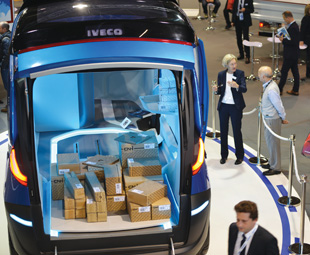 There is still huge debate as to which green option is best though. Clément Chandon, responsible for EMEA heavy line – gas business development at Iveco, said that it was imperative that the industry moved away from diesel. “Diesel makes sense because it has a very high energy density per volume; it is simple to handle; it can power high-efficiency engines; it’s widely available; and costs are low.
There is still huge debate as to which green option is best though. Clément Chandon, responsible for EMEA heavy line – gas business development at Iveco, said that it was imperative that the industry moved away from diesel. “Diesel makes sense because it has a very high energy density per volume; it is simple to handle; it can power high-efficiency engines; it’s widely available; and costs are low.
“It is, however, still the fossil fuel with the highest carbon content per energy unit (0,265 kg of CO2/kWh). European oil dependency is increasing continuously (it was 78 percent in 2003 and 88 percent by 2013). Diesel’s combustion produces particulates NO and NO2 that affect air quality; its combustion generates noise; its production and transport can lead to major ecological damages (oil spills, for instance); and related taxation tends to rise (emission tax, for instance). As such, we must find alternative solutions.”
Chandon said that natural gas is the only viable alternative to diesel. “It is available, cost effective and offers a reduction in both noise and air pollutants. We have studied natural gas in great detail and we believe that it offers an annual saving of €5 319 (R79 893) versus a diesel-powered truck.” This study was based on an annual mileage of 120 000 km and a six-year lease.
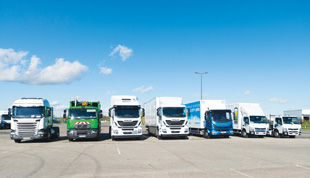 Erik Ronnefarth, manager marketing and product for Fuso Europe, was punting hybrids and electric vehicles. He explained that Fuso is the hybrid competence centre for Daimler Trucks. “That is because we have over 40 years of experience when it comes to developing alternative drivelines. Fuso started with electrification of vehicles back in 1973 (buses at that stage),” he revealed.
Erik Ronnefarth, manager marketing and product for Fuso Europe, was punting hybrids and electric vehicles. He explained that Fuso is the hybrid competence centre for Daimler Trucks. “That is because we have over 40 years of experience when it comes to developing alternative drivelines. Fuso started with electrification of vehicles back in 1973 (buses at that stage),” he revealed.
Ronnefarth furthermore stressed that hybrids and full electrics could be cost effective. “We recently undertook a customer test in Portugal involving eight fully electric trucks. Each electric truck saved an average of over €1 000 (R15 018) per 100 000 km compared with a conventional diesel truck.”
Karine Forien, energy efficiency strategy director at Renault Trucks, agreed with Chandon that natural gas was the “most mature alternative technology to diesel”. “Renault is also working on a number of other solutions, however, including electric, hydrogen-powered and biodiesel trucks. We will have a full range of commercial ‘green’ offerings on the market within five years,” she revealed.
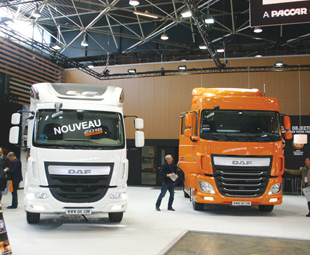 Johan Palmqvist, product manager sustainable trucks at Scania, was in agreement with Forien that many options need to be considered. “We don’t believe that there is one silver bullet; all the technologies are needed to solve the problem. We don’t only want to meet our own sustainability objectives, but also those of our customers.
Johan Palmqvist, product manager sustainable trucks at Scania, was in agreement with Forien that many options need to be considered. “We don’t believe that there is one silver bullet; all the technologies are needed to solve the problem. We don’t only want to meet our own sustainability objectives, but also those of our customers.
“We need smarter transport, energy efficiency and alternative fuels. For a fuel to be sustainable it should lower CO2 and be available in sufficient volume – it’s all about cost. If we cannot provide a decent business case, it’s not going to be an option,” he stressed.
PLANET-PLEASING PRODUCTS
In keeping with the heated debate about alternative fuels, there were many “green” products on display. Thermo King announced that its trailer and self- and vehicle-powered refrigeration units would be available with the next-generation, lower-global-warming-potential (GWP) refrigerant – R-452A – as standard, as of January 1, 2016.
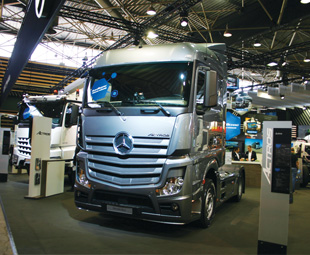 The new Chemours Opteon XP44 (R-452A) refrigerant has about a 50 percent lower GWP value than current refrigerants.
The new Chemours Opteon XP44 (R-452A) refrigerant has about a 50 percent lower GWP value than current refrigerants.
“Thermo King is committed to delivering climate-friendly temperature-control solutions and we’ve been fulfilling our commitment,” said Karin de Bondt, vice president and general manager for truck, trailer and bus at Thermo King in Europe, Middle East and Africa.
“Every new truck and trailer unit will be high performance and feature R-452A and, in addition to new units, our customers can opt for this solution in existing systems from our trained and certified technicians, who form the industry’s most extensive sales and service network,” she added.
In a similar vein, Michelin launched “green” tyres at Solutrans. These new tyres – the new Michelin X Line Energy Front and Michelin X Line Energy D2 – have been approved by Mercedes-Benz for its new Actros truck dedicated to long-distance haulage. They are available on new Mercedes-Benz Actros trucks from January 2016.
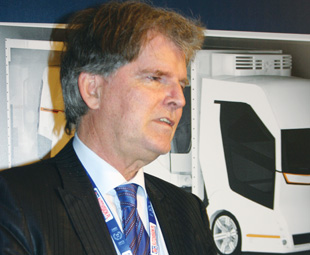 Michelin is promising substantial benefits from these new tyres – specifically one litre of diesel for every 100 km travelled (2,66 kg fewer CO2 emissions over the same distance).
Michelin is promising substantial benefits from these new tyres – specifically one litre of diesel for every 100 km travelled (2,66 kg fewer CO2 emissions over the same distance).
This represents an average saving of €1 610 (R24 182) in fuel and 3 724 kg in CO2 emissions over the initial life of the tyres (before any regrooving or retreading).
Cummins also joined the green party at Solutrans, announcing a new stop-start system for its ISB engines. This technology was only previously available as part of diesel-electric hybrid installations.
Claudio Barcena, Cummins regional engine sales leader, explained that the new stop-start system was being launched in line with the planned 2017 product update for Euro-6 OBD C. “It has been developed by Cummins engineers to deliver proven savings for truck operators with a competitive payback period. We will provide a system that delivers between one and seven percent fuel savings, depending on duty cycle, without significant operator investment needed.”
To meet the tough operational needs for a stop-start system, Cummins has redesigned critical engine components and is validating them across four million stop-starts. Hardware updates to the ISB
Euro-6 engines include a new starter motor capable of 210 000 start-stop events, a new flywheel and ring gear, new wiring, a new engine speed sensor, an updated fuel system, new con rod bearings and new crankshaft bearings.
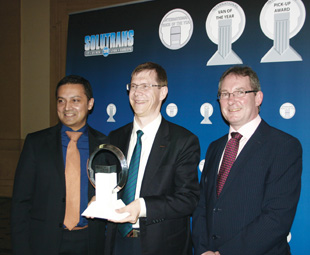 These, as well as the current engines parts, have all been validated during the test-cell and field-test programme covering both truck and bus installations. “An urban delivery truck could stop up to 30 times in an hour, so Cummins’s solution will provide both environmental and operator benefits. Our engineers will work closely with original manufacturer (OEM) customers on the integration to ensure the full value of the investment is maximised,” added Barcena.
These, as well as the current engines parts, have all been validated during the test-cell and field-test programme covering both truck and bus installations. “An urban delivery truck could stop up to 30 times in an hour, so Cummins’s solution will provide both environmental and operator benefits. Our engineers will work closely with original manufacturer (OEM) customers on the integration to ensure the full value of the investment is maximised,” added Barcena.
The ISB engine software has been upgraded to manage the technology and provide flexible architecture, enabling customers to choose what they want from it and tailor it to their operations. Additional improvements seen from the Cummins stop-start system include reduced noise, vibration and emissions around the vehicle routes.
SALUTING EXCELLENCE
Solutrans was also the platform for saluting excellence; the International Truck of the Year was announced (read all about it on pages 2 and 4 of this issue). So, too, were the winners of the International Van of the Year and the International Pick-up Award for 2016.
 The Euro-6 sixth-generation Volkswagen Transporter was named Van of the Year for the third time, and Dr Scholz Eckhard, head of Volkswagen Commercial Vehicles, was, understandably, elated.
The Euro-6 sixth-generation Volkswagen Transporter was named Van of the Year for the third time, and Dr Scholz Eckhard, head of Volkswagen Commercial Vehicles, was, understandably, elated.
“The prestigious International Van of the Year 2016 award for our T-Series is a great mark of recognition for the achievements of our team, which, by implementing the correct measures, has made our icon from Hannover the best Transporter ever.
“We dedicate this prize to all Transporter users and accept it with great pleasure on behalf of the whole Volkswagen Commercial Vehicles team. This great honour makes us very proud and gives us a positive impetus for a good start into what is set to be an eventful year in 2016,” he said.
It was interesting to note that Eckhard started his acceptance speech by apologising for the Volkswagen emissions debacle.
The Transporter beat the Fiat Professional Doblo Cargo and Volkswagen Caddy 4 (Euro 6) into second and third spots respectively.
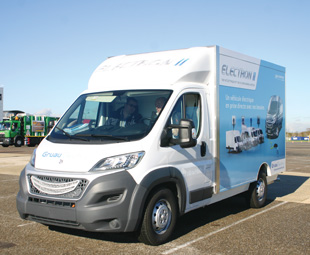 The Nissan Navara won the International Pick-up Award for 2016, beating the Ford Ranger and Mitsubishi Triton into second and third spots recently.
The Nissan Navara won the International Pick-up Award for 2016, beating the Ford Ranger and Mitsubishi Triton into second and third spots recently.
The all-new Nissan NP300 Navara underwent the rigorous International Pick-up of the Year testing process, being judged for its off-road ability, on-road performance and value for money. It was also tested on its ability as a workhorse, which included comparing towing capabilities.
When receiving the award, Philippe Guérin-Boutaud, corporate vice president Nissan light commercial vehicles business unit, said: “This prestigious award celebrates Nissan’s 80 years of pick-up expertise. Rigorous testing by International Pick-up of the Year illuminated the tough and innovative character of the all-new Navara.”
“Nissan is best known by its customers in Europe as the maker of capable 4x4s and breakthrough crossovers. This new Navara represents the fusion of those two realms of excellence to deliver a truly breakthrough pick-up truck that combines rugged 4×4 toughness with the sophistication and efficiency of a Crossover,” added Ponz Pandikuthira, director of light commercial vehicles for Nissan Europe.
FUTURE FANTASTIC
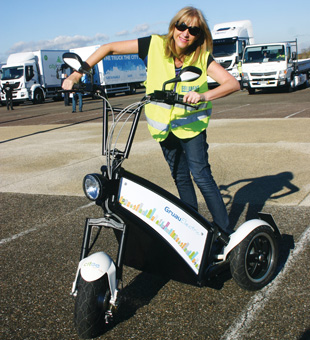 So much for present technology; Solutrans was also the setting for a peek into the future, and no one provided a more fascinating insight than Mike Robinson, design director and chief executive officer of ED Design (the largest independent engineering and design company in Italy).
So much for present technology; Solutrans was also the setting for a peek into the future, and no one provided a more fascinating insight than Mike Robinson, design director and chief executive officer of ED Design (the largest independent engineering and design company in Italy).
Essentially, he asked us to take all our preconceived ideas about vehicles and toss them out of the window; if Robinson has his way, the vehicle of the future will look nothing like those that are currently on our roads.
Drivers could become redundant, for instance, and steering wheels will be banned! The company has even developed a windowless, fully electric, racecar called Torq. Oh, did I mention that it doesn’t have a driver? (ED also designed an autonomous helicopter back in 2011.)
The Torq is the first in a series of vehicles (including long-haul trucks) that ED Design is working on in an ambitious development project called MAAL (Mobile Automotive Autonomous Laboratory). (No, not MAL!)
MAAL is working on many fascinating concepts that sound a bit like pie in the sky stuff, but, speaking at Solutrans, Robinson insisted that this was not the case. “We can transform science fiction into science. Imagine a world where there are no accidents, no cops and no need for insurance! We can achieve this!” he insisted.
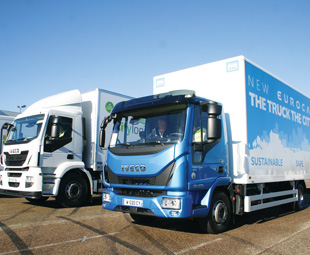 This Utopia will be achieved using a variety of tools:
This Utopia will be achieved using a variety of tools:
• Vehicles will be equipped with digital chauffeurs. Feeling hungry and in the mood for a burger? Tell your chauffeur and he will take you to the nearest burger joint.
• “Swarm technology” will be implemented. Fish, bees and birds don’t have problems with traffic jams, because they use this technology. Vehicles will, too.
• Vehicles won’t have windows anymore. These will be replaced by screens.
• Vehicles will do so much more. Mobile hotel rooms that collect one from the airport (autonomously of course) are in the pipeline.
• The role of the driver will change. A truck driver will be able to do gym, sleep, or play computer games while his truck is on the move. He will also be able to chat to his family, who will be projected onto a screen inside the truck.
• Motorcycles will have to be hands free, too – because every other vehicle on the road will be autonomous, so you cannot have bike riders weaving in and out of traffic.
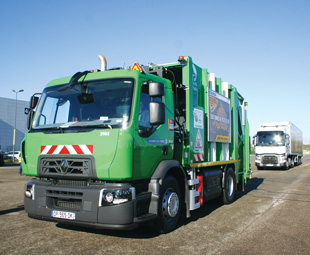 It sounds fascinating doesn’t it? Robinson predicted that we were about to enter “the greatest transformation in the transport industry since its inception, with changes that will guarantee better quality of life inside their big rigs, above all with zero accidents”.
It sounds fascinating doesn’t it? Robinson predicted that we were about to enter “the greatest transformation in the transport industry since its inception, with changes that will guarantee better quality of life inside their big rigs, above all with zero accidents”.
“According to the latest statistics, about 1,2 million people die each year in road accidents, and the number is expected to grow in a society where demand for transportation is still increasing rapidly, especially in the emerging markets.
“We have to change that, and autonomous vehicles are designed to progressively reduce and finally eliminate this problem. The commercial transport field will soon take leadership in this transformation, once infrastructure and legislation catch up to this new reality, and we all must become protagonists in a very near future,” Robinson concluded.
It sounds as though the future is going to be a great place to be!
As regular readers of FOCUS know, this magazine has been appointed an associate member of the International Truck of the Year (IToY)! FOCUS is the sole South African and the sole African magazine to have joined this prestigious body. One of the advantages of this association is access to exclusive ITOY events, such as Solutrans.
Published by
Focus on Transport
focusmagsa

